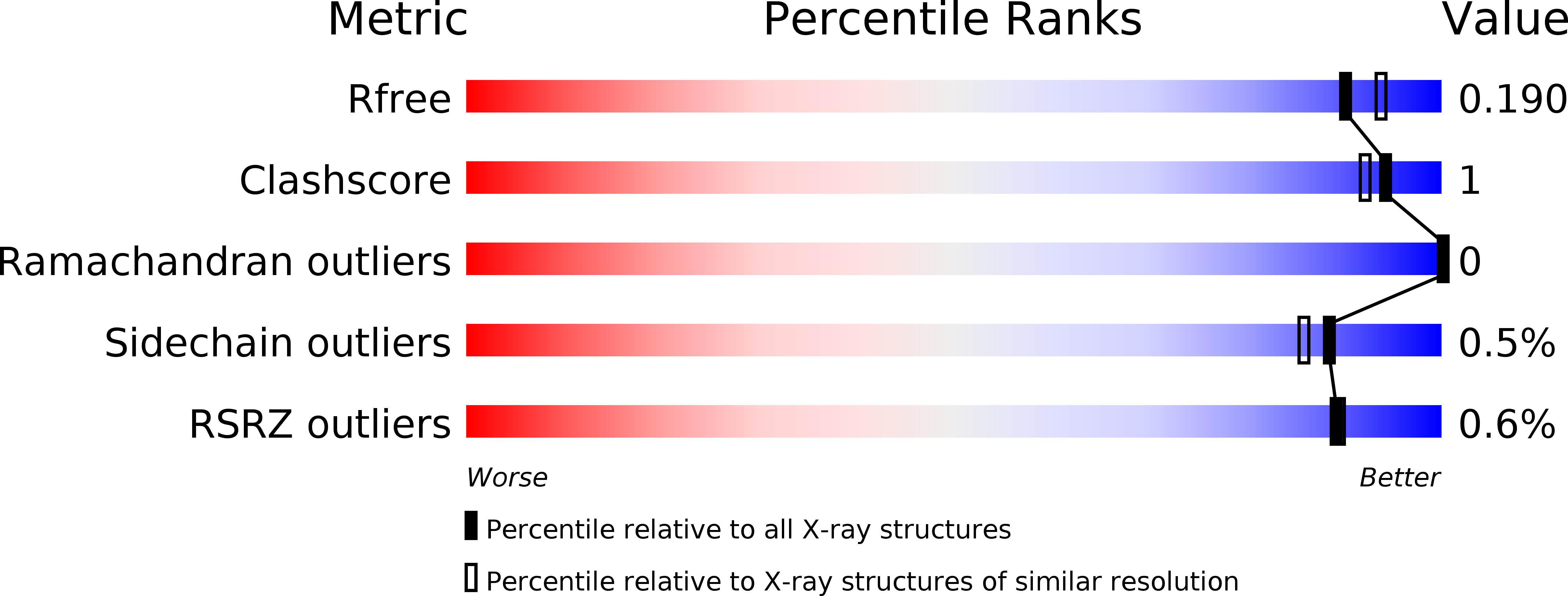First insights of peptidoglycan amidation in Gram-positive bacteria - the high-resolution crystal structure of Staphylococcus aureus glutamine amidotransferase GatD.
Leisico, F., Vieira, D.V., Figueiredo, T.A., Silva, M., Cabrita, E.J., Sobral, R.G., Ludovice, A.M., Trincao, J., Romao, M.J., de Lencastre, H., Santos-Silva, T.(2018) Sci Rep 8: 5313-5313
- PubMed: 29593310
- DOI: https://doi.org/10.1038/s41598-018-22986-3
- Primary Citation of Related Structures:
5N9M - PubMed Abstract:
Gram-positive bacteria homeostasis and antibiotic resistance mechanisms are dependent on the intricate architecture of the cell wall, where amidated peptidoglycan plays an important role. The amidation reaction is carried out by the bi-enzymatic complex MurT-GatD, for which biochemical and structural information is very scarce. In this work, we report the first crystal structure of the glutamine amidotransferase member of this complex, GatD from Staphylococcus aureus, at 1.85 Å resolution. A glutamine molecule is found close to the active site funnel, hydrogen-bonded to the conserved R128. In vitro functional studies using 1 H-NMR spectroscopy showed that S. aureus MurT-GatD complex has glutaminase activity even in the absence of lipid II, the MurT substrate. In addition, we produced R128A, C94A and H189A mutants, which were totally inactive for glutamine deamidation, revealing their essential role in substrate sequestration and catalytic reaction. GatD from S. aureus and other pathogenic bacteria share high identity to enzymes involved in cobalamin biosynthesis, which can be grouped in a new sub-family of glutamine amidotransferases. Given the ubiquitous presence of GatD, these results provide significant insights into the molecular basis of the so far undisclosed amidation mechanism, contributing to the development of alternative therapeutics to fight infections.
Organizational Affiliation:
UCIBIO, Departamento de Química, Faculdade de Ciências e Tecnologia, Universidade Nova de Lisboa, Caparica, Portugal.
















